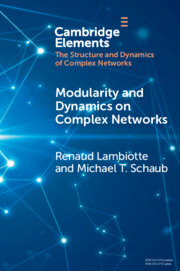Element contents
Modularity and Dynamics on Complex Networks
Published online by Cambridge University Press: 21 December 2021
Summary
- Type
- Element
- Information
- Online ISBN: 9781108774116Publisher: Cambridge University PressPrint publication: 03 February 2022
References
- 16
- Cited by

